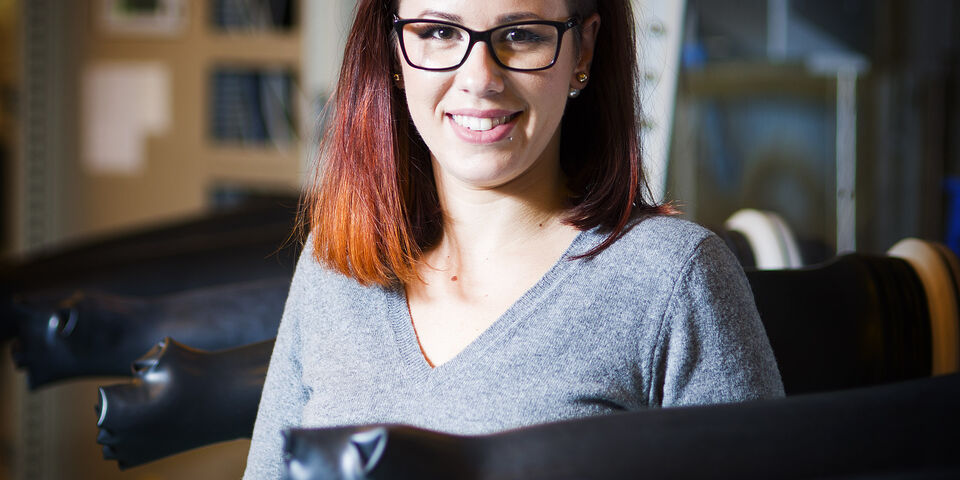Home stretch | Layers for light
By building up solar cells from thin layers of different materials, you can make optimum use of the whole light spectrum. PhD candidate Alice Furlan tried one option by sticking thin silicon layers onto a layer of semiconductive plastic, thereby making a cell that absorbs sunlight from infrared to ultraviolet.
Alice Furlan can already visualize it: zoom off to the beach with a parasol covered with solar cells, by means of which she can charge her mobile phone and other electrical gadgets. “It may be my Italian blood”, she says, smiling. “But I see a future for flexible solar cells particularly in consumer electronics. That is one thing they are eminently suited for.”
After having spent a stint as an Erasmus student in Delft this Italian woman decided that she could settle in alright in the Netherlands. So she arranged an internship in the lab of Spinoza Prize winner René Janssen, where she was welcomed back for a PhD research. “I have always been interested in solar cells and I rather liked the thought that this research could make a contribution to the environment”, as she explains her motivation.
Although flexible solar cells, made of plastic and/or thin silicon layers, are handy to use and cheap to manufacture, their yields are lagging behind those of standard solar cells of crystalline silicon. Therefore Furlan tested how the different layers can be combined best. She began with two or three layers of different kinds of semiconductive plastic, whereby each individual layer absorbs yet another color of light – which means that jointly they make optimum use of incident sunlight.
The crucial place in these so-called tandem and triple junction solar cells is the connection between the different active layers, Furlan explains. “In those contact layers you get the biggest losses; the active layers have been extensively tested at an earlier stage as single-layer cells, so they have already been optimized.”
By means of golden nanoparticles and metal oxides she let go at those connection problems with varying degrees of success, she says. However, Furlan feels that the crowning glory of her statutory PhD period is the cooperation with her colleagues from Delft, with whom she combined the benefits of thin layers of so-called amorphous silicon - good absorption of ultraviolet and visible light – with the Eindhoven plastic cells, which proved to be very sensitive to the infrared part of the light spectrum.
That combination resulted in a yield of more than thirteen percent; unparalleled for this type of cells, according to Furlan. “We’ve put together two disciplines within our area of expertise which normally are totally separated. I found it quite inspiring to see that you can achieve more when you do not seclude yourself in your own cubicle.”
Still, the Italian researcher has had enough research for now. As she has meanwhile struck up a relationship with a Dutch colleague, she now hopes to find an organizational job in The Netherlands.. “I believe that by nature I am not actually a scientist”, she says. “In the end, people are easier for me to get along with than lab equipment.”


Discussion